This post contains affiliate links, meaning, if you click through and make a purchase, I may earn a commission at no additional cost to you. As an Amazon Associate I earn from qualifying purchases.
If you’ve been following Hella Basque on Instagram, you’ll know that a few months ago I went on a trip to Australia and New Zealand with my family.
It’s been a years-long dream of my dad’s and my uncle’s to visit these two countries. Aita had heard that Australia was a nice, clean country (he has an obsession with cleanliness on his travels—absolutely LOVED Switzerland for this reason), and he was happy to see all of the sheep he’d heard about that populated New Zealand.
Normally Aita’s not a big world traveler. It’s like pulling teeth to try to even get him to go visit the Basque Country, let alone a country he’s unfamiliar with.
Mom and I, on the other hand, don’t need any convincing to go on a trip, so Mom jumped at the chance to organize it all and I was very glad to go along for the ride.
In the planning stages, my mom had the forethought to organize something she thought Aita and my uncle would really enjoy: a visit to the Basque club in Sydney, Australia, Gure Txoko (‘Our Corner’) Euskal Etxea.
Gure Txoko was founded in 1966 by 26 families and is the oldest Basque club in Australia.
We had heard from Basques here in San Francisco that there was a Basque club in Sydney, and I’d come across their Facebook page before, but we didn’t know any more about it than that.
We were curious to learn about these Basques in Australia. Who are they? What did they go to Australia to do? When did they immigrate? Where in Australia did they settle? How many of them are there?
Gure Txoko is open every Sunday for lunch, but unfortunately our itinerary had us in Sydney in the middle of the week.
Without expecting much of a response, my mom sent off a message to their Facebook page asking if there was any way we could visit their Euskal Etxea on a Tuesday.
And they said yes!
Visit to the Euskal Etxea
The Board of Directors allowed us to crash their meeting on a weeknight to show us around.
In true tourist fashion, on the day of the visit we went straight from a sunset dinner cruise around Sydney Harbour to the Darlinghurst suburb of Sydney to find this clubhouse.
By the time we got out of the cab at the correct address, the day had turned into night. It being April in the southern hemisphere, we were visiting during Australia’s autumn so the evening was dark and breezy.
We had no idea where we were. I was just following the dropped pin on my Google Maps, and even the taxi driver was concerned we were in the wrong place.
The street looked like just a residential neighborhood with no businesses or anything resembling my conception of a Basque clubhouse in sight.
There was an alley up ahead of us on the left, I compared our location to the one on my phone, and figured maybe the entrance was down the alleyway.
The taxi driver was not a fan of my idea to just wander down this dark alley and hope for the best.
But getting out of the car, I looked up at the building in front of us, and there was a subtle Gure Txoko sign.
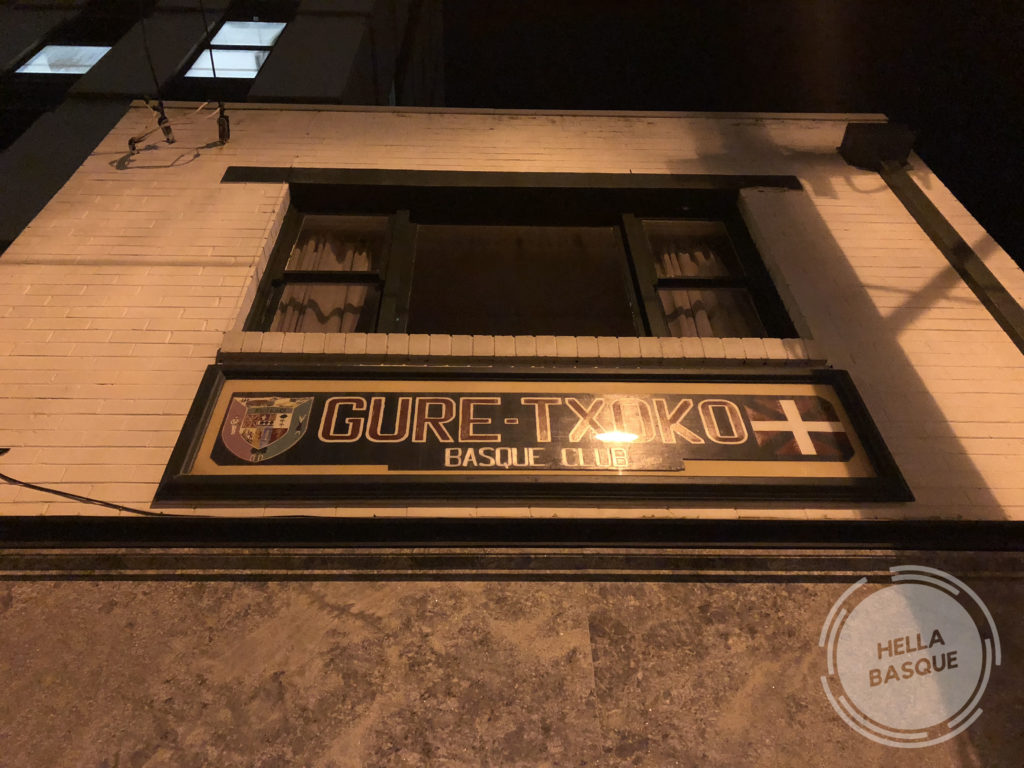
The building is small and nondescript, with two solid doors at street level and a row of opaque windows in between them.
Knocking on the looming dark wood door felt like we were trying to gain access to a speakeasy. I half expected someone to open the door a crack and ask for the password. There was no noise or any indication of life on the other side of the door.
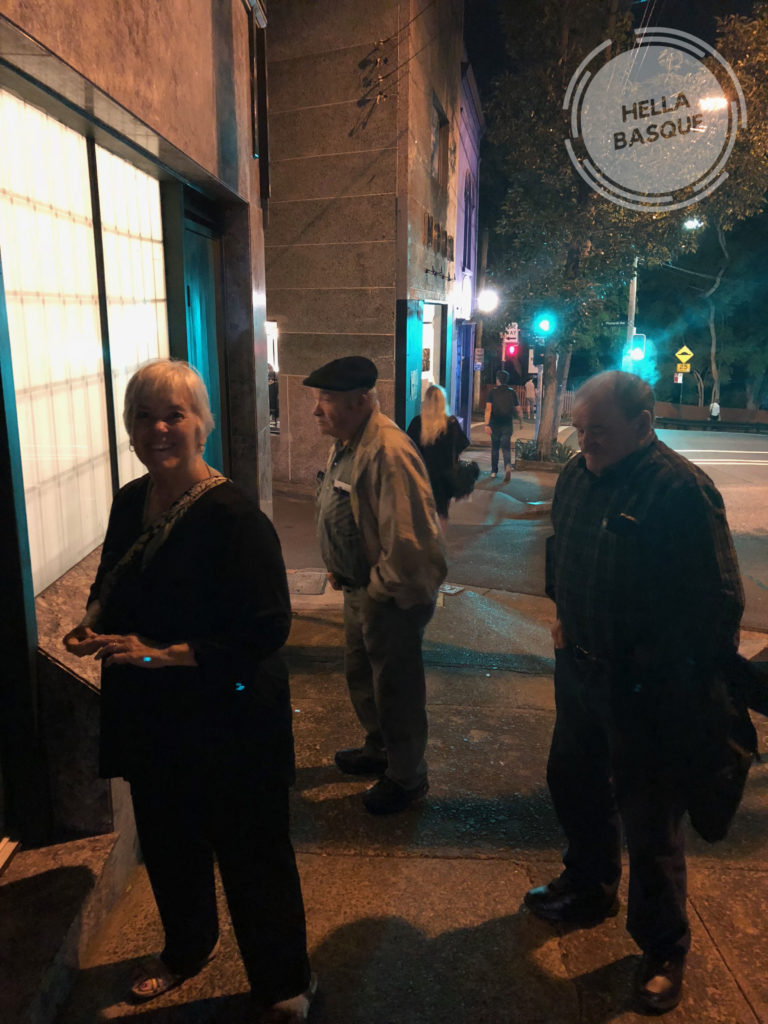
But we were greeted by a very friendly and welcoming woman who knew exactly who we were and why we were there, Estefania Martino, the President of Gure Txoko Euskal Etxea. She ushered us into a room that made me literally laugh out loud with how it smelled like the Basque Country. I couldn’t believe it!
The aroma of the wood paneling on the walls and the wooden tables and chairs instantly brought back memories of sitting around in relatives’ farmhouses in the Basque Country for hours on end. It was incredible that the space really did feel like a piece of rural Europe.
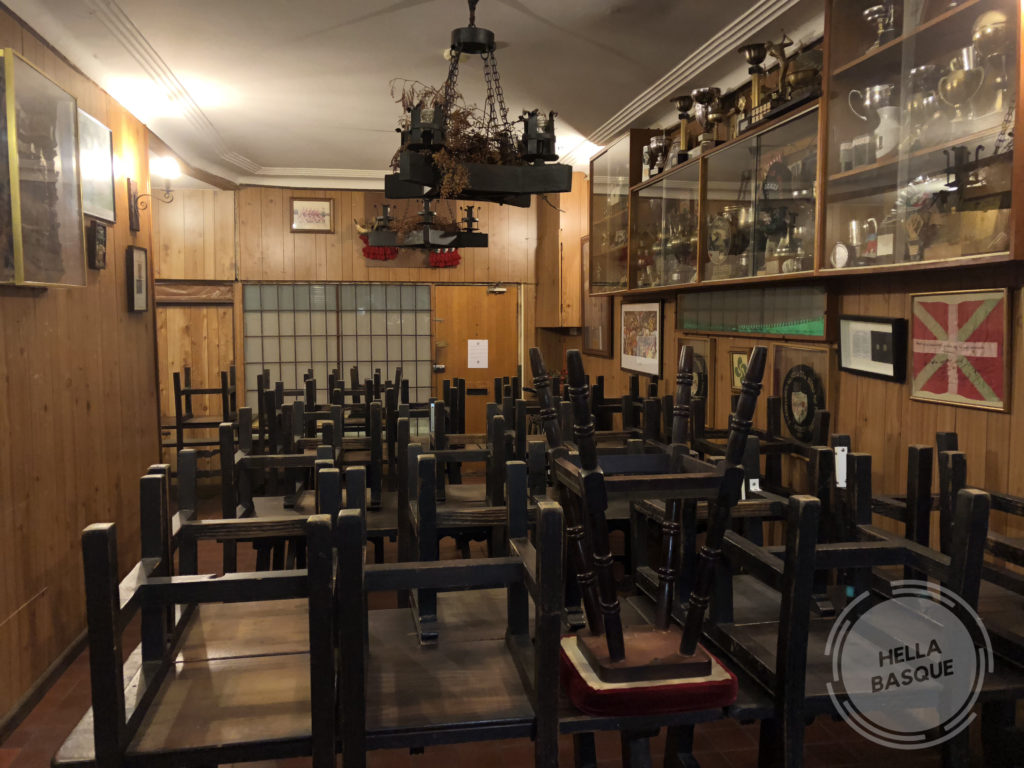
Crossing the threshold of Gure Txoko transports you from Australia to the Basque Country. The space makes it easy to forget that you’re actually on the other side of the world.
The building is a converted house that at one time served as a brothel, hence the nondescript entrance. Walking in, you enter one long room, filled with tables and chairs, with a bar at the back.
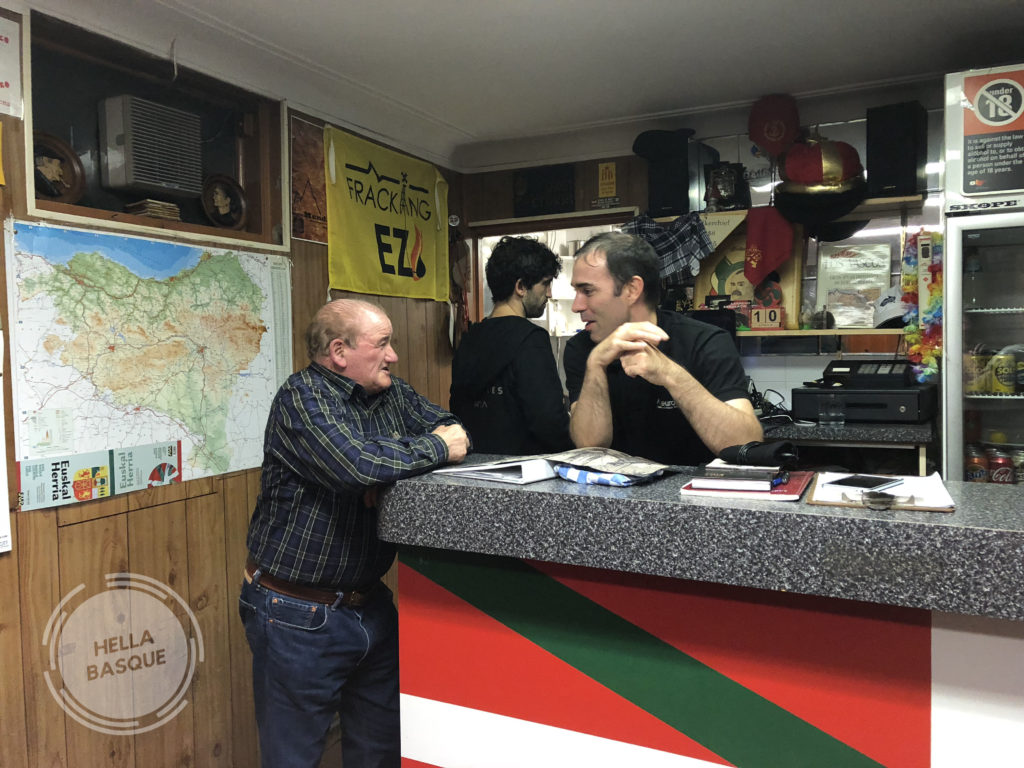
The walls are covered in memorabilia and photos from events and members of the club, past and present.
Like many other Euskal Etxeak all around the world, Gure Txoko has had Basque dance lessons, mus tournaments, performances by musicians visiting from the Basque Country, pilota tournaments and sports exhibitions, Korrikas, and many parties hosted at the clubhouse.
You can see photos of some of their past events here.
RECOMMENDED A Hella Basque Visit to Iceland
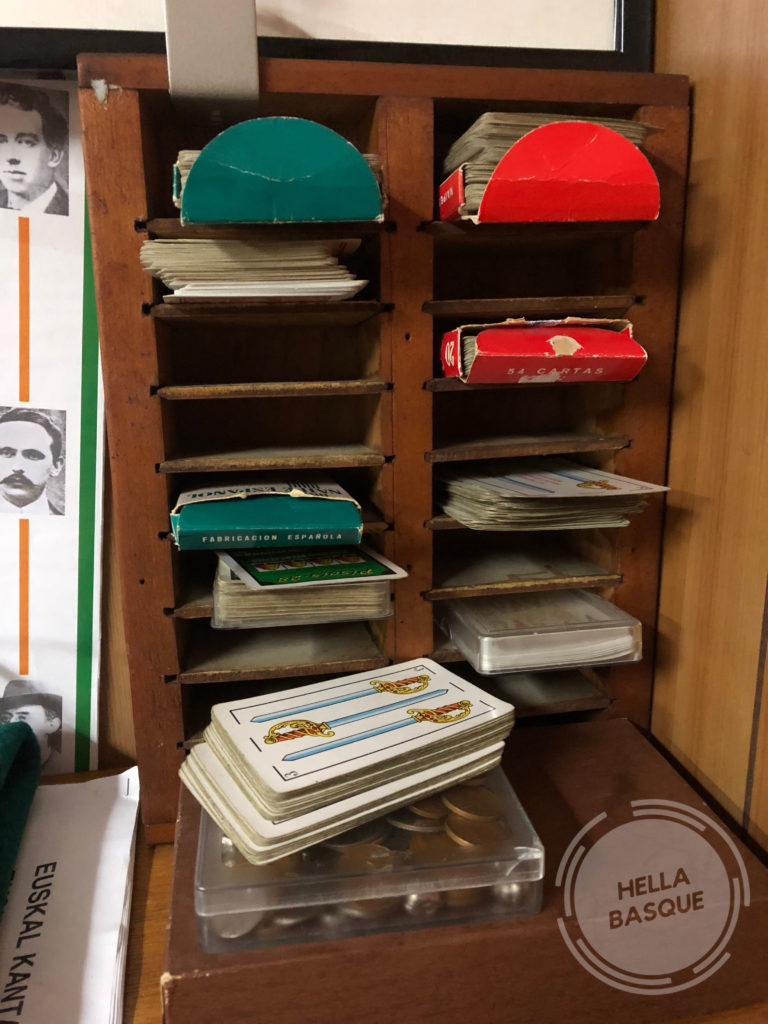
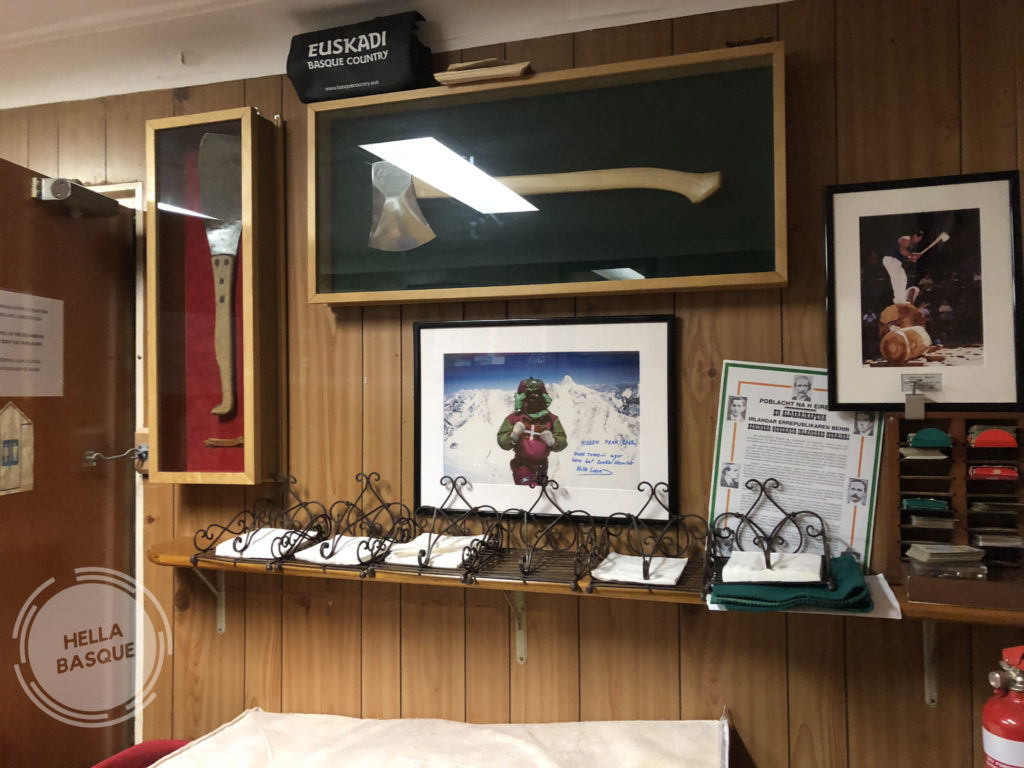
At the back of the house is a kitchen where Sunday lunches are cooked by volunteers and the outdoor space consists of a small fronton. There was a struggle to get the lights working at the time of our visit, so you’ll have to forgive the dark and grainy photos we took.
Despite the darkness, we insisted on taking a picture with the famous Gure Txoko sign on the side of the fronton.
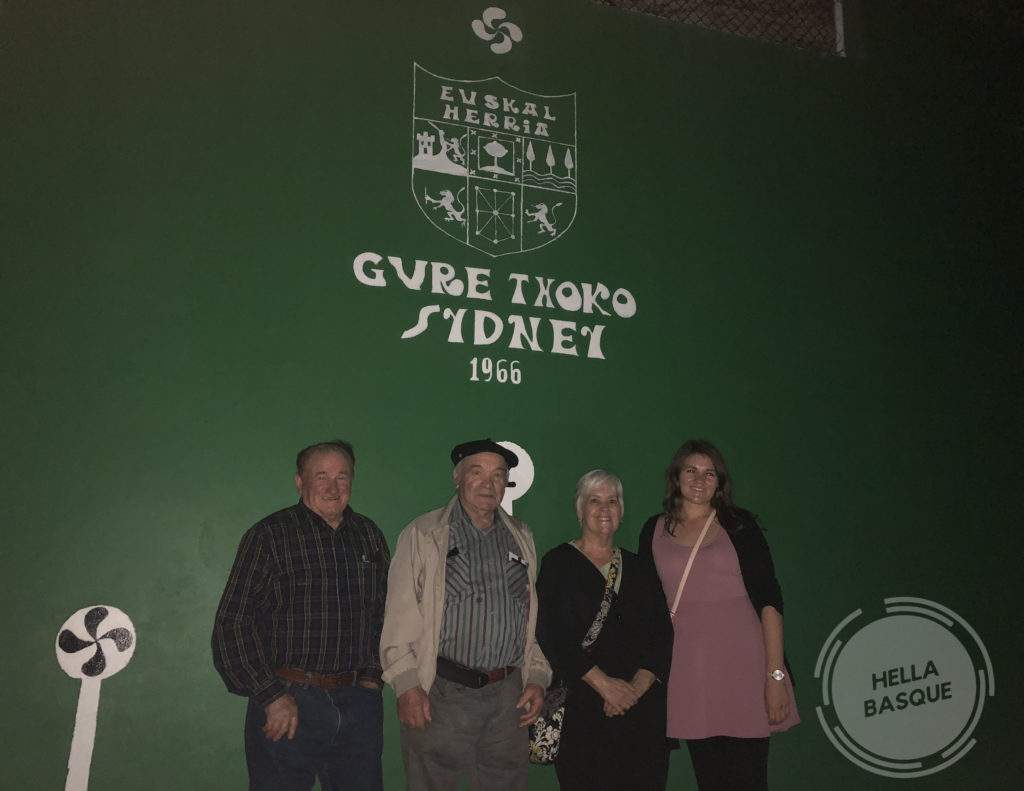
Aita, my uncle Léon, Mom, and me
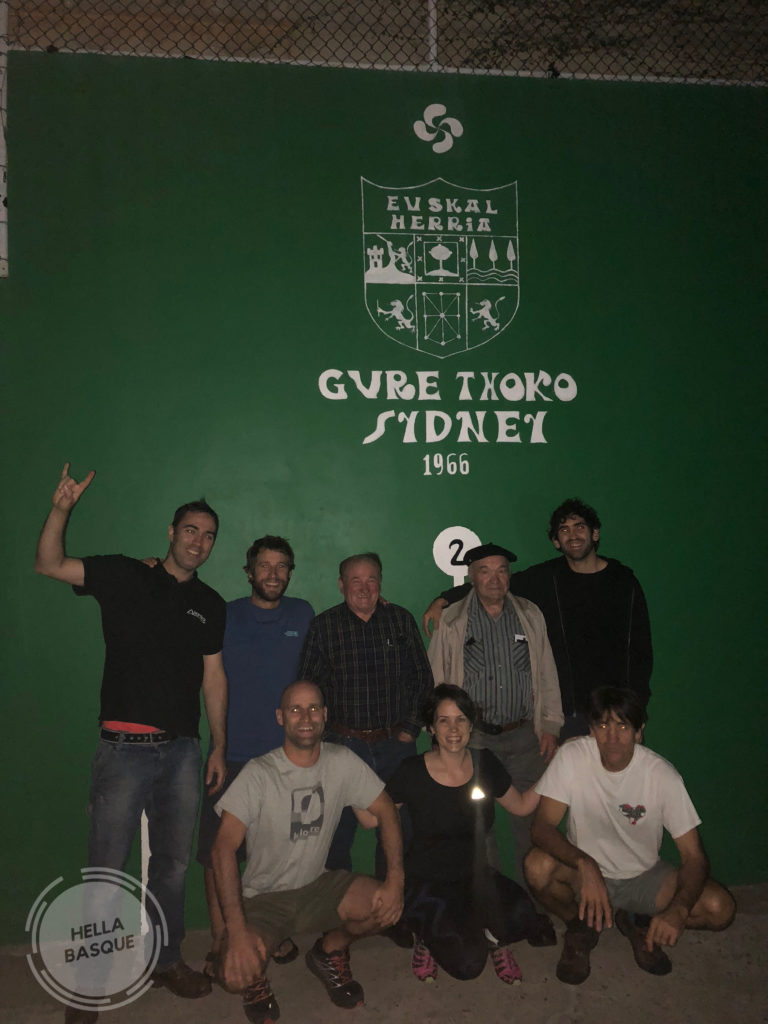
Back row (left to right): Jagoba Landa, Beñat Oliveira, Aita, my uncle Léon, Aitor Aramburu. Front row (left to right): Jon Urrejola, Estefania Martino (President), Manu Martin
Upstairs, the clubhouse has a meeting room and library where Euskara classes are held. Gure Txoko shares the space with a local Catalan club to also put on Catalan language lessons.
Finally, the house has a few bedrooms where young people from the Basque Country stay to keep an eye on the building, keep it clean, and cook and serve Sunday lunches in exchange for room and board.
What a creative way to ensure the caretaking and security of the building, while also providing a wonderful opportunity for Basques new to Australia to have a place to stay and jump right into a community to support them.
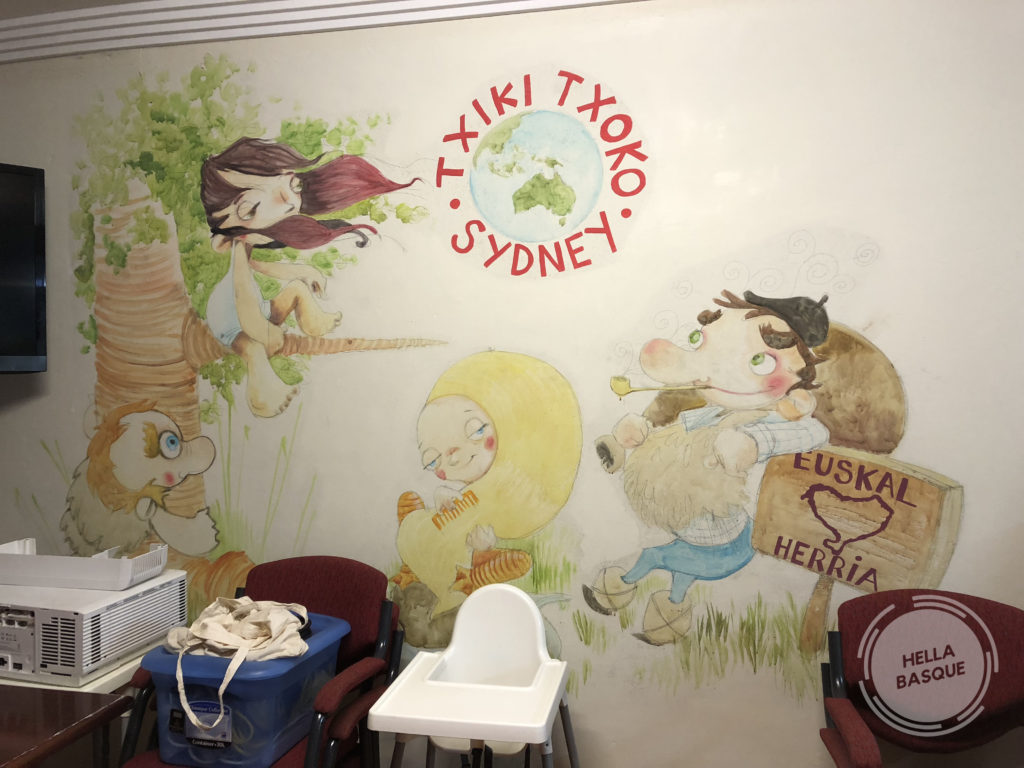
As their membership is small, Gure Txoko encourage members of the local community and the public to come to their Sunday lunches. Sometimes they only have one table of people for lunch, but for larger parties and events they fill the entire house with guests.
Some of the founding members and families of Gure Txoko still come for Sunday lunch and other events, but the club now has a wider membership that includes more recent migrants from the Basque Country, young professionals seeking work opportunities in Sydney.
Of the people who showed us around, all were from the Basque Country, except for Manu Martin who was the child of Basque immigrants born and raised in Australia.
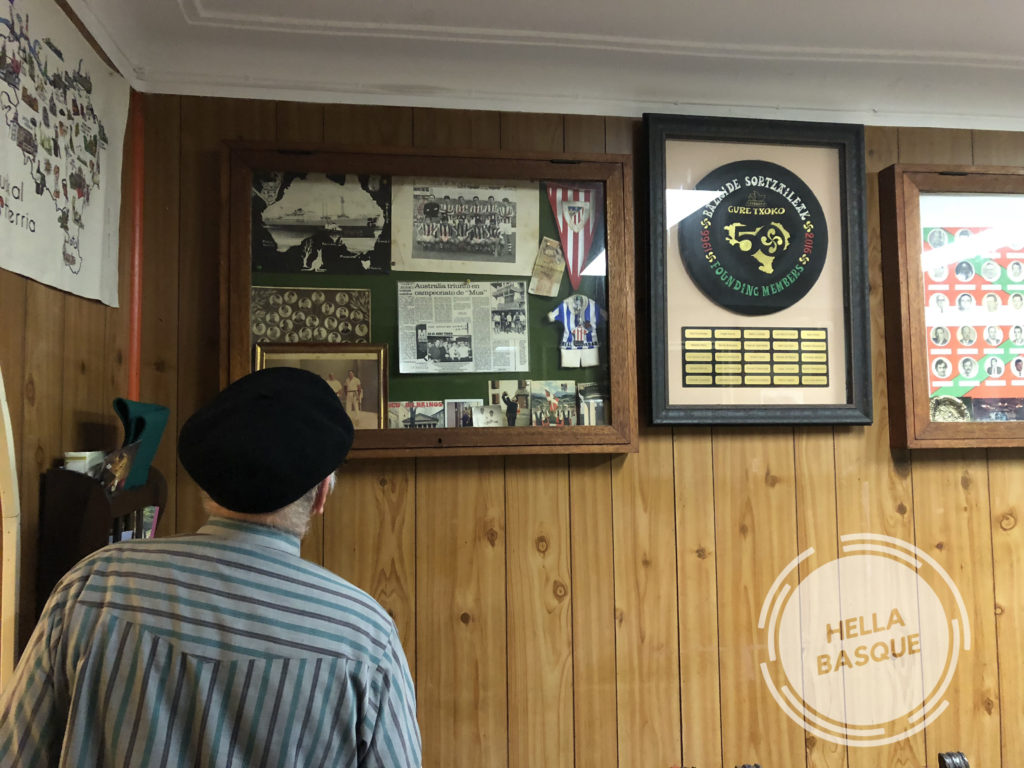
I was interested to learn how the current Board of Directors tries to attract the attention of the larger community and participate in local events, such as the 2018 Sydney Design Festival.
For the week-long festival, they had an installation, Archein, set up in the fronton, turning it into a giant txalaparta with music, lighting, and traditional Basque dance reinterpreted for the theme of the show. The show focused on “reclaiming the uses and needs of unexpected architectural spaces that engage in dialogue with diverse cultural social identities” (Sydney Design).
Sounds like nothing I’ve ever seen at an Euskal Etxea before! I wish I could have been there for it.
I imagine that such an event may have been a bit controversial with the older members of the club, but I applaud Gure Txoko and any other Basque clubs of the diaspora for trying out new things and reimagining Basque traditions in the contexts of their surrounding communities.
And art. Just having art outside the rigid confines of traditional Basque dancing and music being a part of contemporary events in the Basque diaspora is excellent in my book.
Don’t get me wrong, I love traditional Basque song and dance as much as the next person, but it’s also nice to see and hear something different every once in a while.
Love that Gure Txoko doesn’t remain stubbornly stuck in the past, but is also open to working with the talents of their current members, artists included.
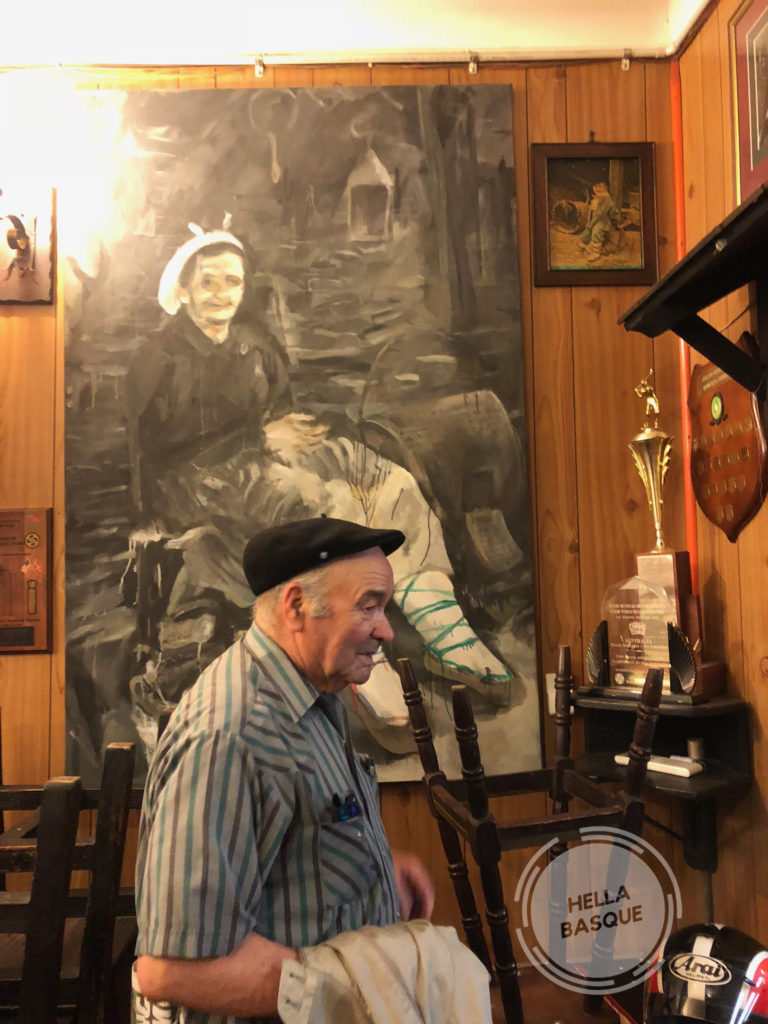
Aita and my uncle relished the opportunity to speak in Euskara with some fresh faces and talk about their hometowns and immigration stories. My mom and I loved getting a tour of the clubhouse and hearing about the Basques in Australia.
Eventually it was getting to be almost 9PM and the board still hadn’t had their meeting yet, so much were we monopolizing their time! Mom and I ushered the enthusiastic old Basque men out and back onto the streets of Sydney.
They could have stayed for hours longer, and I don’t blame them.
Gure Txoko Euskal Etxea is a truly enveloping piece of the Basque Country that sucks you in and makes you forget for a while that you ever left it.
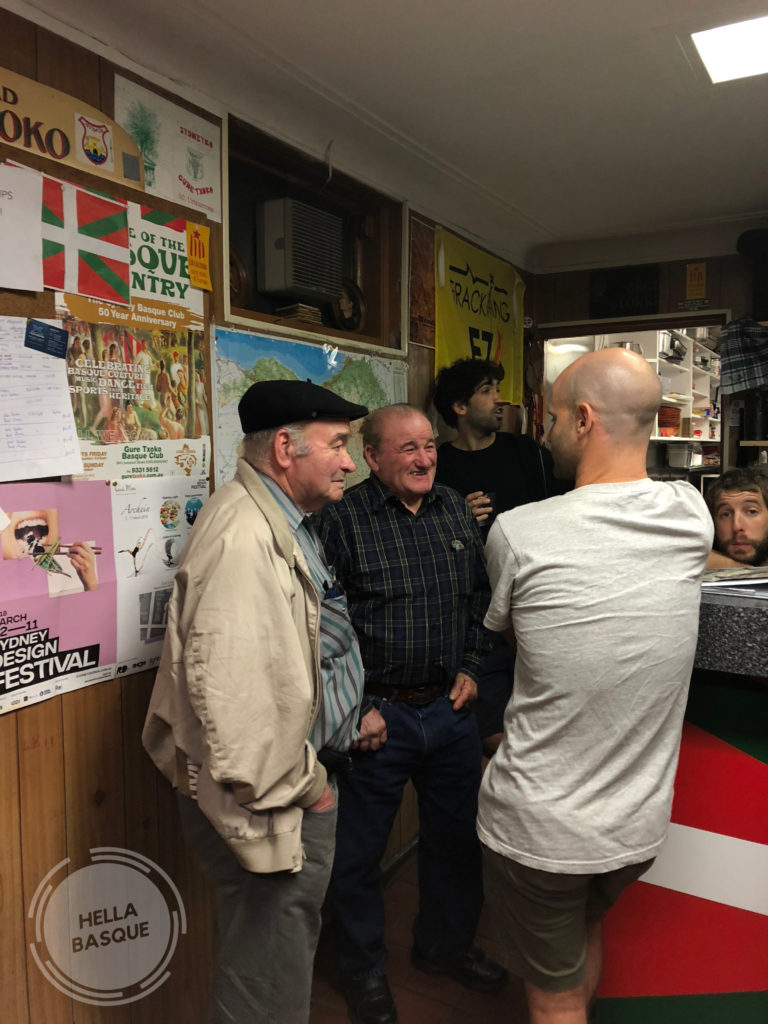
Our visit was a wonderful cultural exchange and educational experience for us, an absolute highlight of our time in Australia.
I’m so grateful to be able to come back to the United States and share my newfound knowledge of the Basques in Australia with all of you.
I can’t thank the Board of Directors of Gure Txoko enough for hosting us for a few hours and sharing their stories with us. It’s a memory we’ll cherish.
I should also mention that there is another Basque club in Townsville, Australia, the Basque Club of North Queensland, founded in 2003. Our friends at Gure Txoko told us many Basques went to cut sugar cane in the northeastern state of Queensland in the 1960s. While we didn’t get anywhere close to it on this trip, if our friends in Queensland were to invite me over one day, I would have a hard time saying no!
Have you been to an Euskal Etxea of the Basque diaspora? Tell us about it in the comments!
Continue Reading:
- 9 Movies Filmed in the Basque Country
- How to Get Travel Tips from Locals in the Basque Country, Even If You Don’t Know Any!
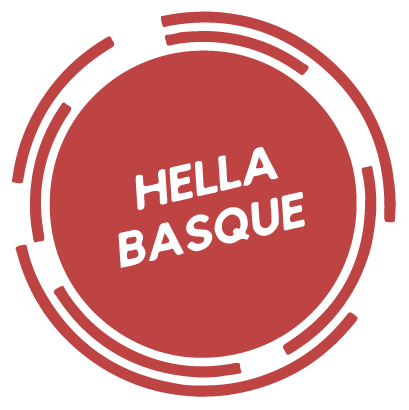

Nice experience, I m living in Bayonne close to the cathedral and I ll be at Sydney next march for my so s wedding with a young Australian lady.
I really appreciate to read your story because I ve heard about that place and I would like to go there.
Regards
Hervé